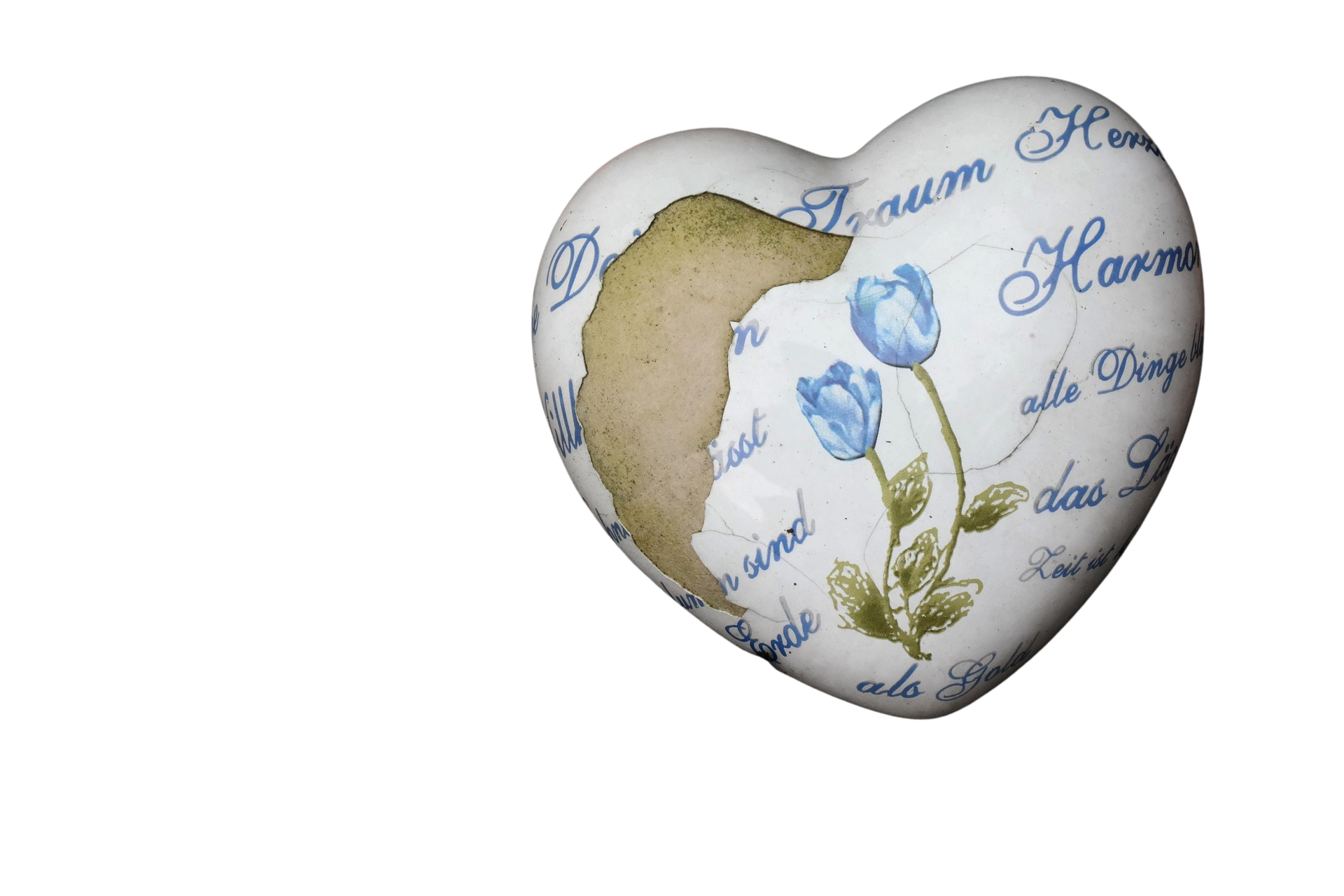
You know that moment…
When you wake up in those first days after surgery and the reality hits you: your body feels broken. Your hip, knee, or shoulder—the very joint that’s supposed to carry you through life—is now a source of pain and limitation.
Maybe you’re lying there thinking: “I’m too old for this. I’ll never do the things I love again. Life is just going to be downhill from here.”
If these thoughts sound familiar, you’re not alone. As a psychiatric nurse practitioner who has worked with many patients recovering from joint replacement surgery, I’ve heard these fears frequently. The worry that your independence is slipping away. The grief of what you can’t do right now. The terrifying question: “Will I ever feel like myself again?”
But I want you to know something before we go any further.
Your body is far more capable of healing than you might believe right now.
The Truth About Healing After Surgery
Here’s what I’ve learned in my 15+ years of clinical practice: the women who recover best aren’t necessarily the youngest or the most physically fit before surgery. They’re the ones who understand something crucial:
Healing isn’t just a physical process. It’s a partnership between your mind, your body, and the environment you create for recovery.
When you shift your attitude from “I’m broken and I’ll never recover” to “My body knows how to heal, and I’m going to give it everything it needs,” something profound happens at the cellular level. Your nervous system calms. Your inflammation begins to decrease. Your body’s natural repair mechanisms actually get to do their job.
This isn’t wishful thinking or positive psychology. This is neurobiology.
The Mind-Body Connection in Recovery
Let me explain what’s really happening in your body right now.
When you’re stuck in fear, hopelessness, or despair about your recovery, your nervous system activates your stress response. Your brain floods your body with cortisol—the stress hormone. And here’s the thing: elevated cortisol actively prevents healing. It increases inflammation, slows muscle repair, and interferes with the very processes your body needs to rebuild strength.
But when you shift to a mindset of acceptance and hope—when you can visualize yourself healing and moving freely again—your nervous system moves into a different state. Your parasympathetic nervous system (your “rest and restore” system) activates. Cortisol levels drop. Anti-inflammatory processes begin. Your body can finally focus its energy on repair instead of defense.
Think of it this way: Your belief in your ability to heal is literally medicine for your recovery.
This is why attitude isn’t just emotional—it’s one of the most important physical factors in how quickly and completely you’ll bounce back from surgery.
The Missing Piece Most People Don’t Talk About: Sarcopenia
Now, let’s talk about something that happens after surgery that nobody warns you about clearly enough: sarcopenia—the loss of muscle mass.
When you have surgery, especially joint replacement, your body goes through trauma. You’re immobilized. You’re in pain. You move less. And in just a matter of days, your muscles start to break down faster than your body can rebuild them. This is especially true for people over 60, because older bodies are already predisposed to losing muscle mass more quickly than younger people.
But here’s the empowering part: You can prevent and reverse this with the right approach.
And that approach has three pillars: the right nutrition, the right movement, and the right recovery environment (which includes sleep).
Pillar One: The Nutrition Strategy That Actually Works
Most people think: “I’ll just eat enough calories and I’ll be fine.”
But post-surgery recovery needs something more specific. Your muscles are damaged from the surgery. They’re trying to rebuild. And they need fuel—specifically, protein—to do that work.
Here’s what I’ve learned in my practice: timing matters as much as quantity.
After joint replacement surgery, your body needs consistent, high-quality protein throughout the day, strategically timed around your physical therapy exercises and meals. Why? Because when you do your rehabilitation exercises, you’re creating micro-tears in your muscles. Protein is what repairs those tears and builds them back stronger.
Here’s what this looks like practically:
- Aim for protein with each meal: Think 25-30 grams per meal. This might be eggs, Greek yogurt, fish, chicken, or plant-based sources like lentils and chickpeas.
- Time protein around your physical therapy: Having protein within an hour after your rehabilitation exercises gives your muscles the raw materials they need to repair right when they need it most.
- Include micronutrients that support healing: Vitamin C (for collagen formation), zinc (for immune function and wound healing), and magnesium (for muscle function and inflammation reduction). These aren’t luxuries—they’re necessities for your body to actually rebuild tissue.
- Don’t forget healthy fats: Omega-3 fatty acids from fish, walnuts, or flaxseeds actively reduce inflammation—which is one of the biggest obstacles to your recovery.
And here’s something many people miss: your gut health matters. When you’re stressed, taking pain medications, and moving less, your digestive system can slow down. If your digestion isn’t working well, you can eat all the right things and your body still won’t absorb the nutrition it needs. So gentle movement, hydration, and sometimes natural digestive support become important parts of the recovery picture.
Pillar Two: The Healing Power of Sleep
I want to talk about sleep in a way you may not have heard before.
Sleep isn’t a luxury. It’s not something to sacrifice while you’re “pushing through” recovery. Sleep is where the actual healing happens.
When you sleep, your body releases growth hormone—the hormone responsible for rebuilding muscle tissue and repairing the damage from surgery. Without adequate sleep, that process gets disrupted. Your body can’t rebuild muscle efficiently. Inflammation stays elevated. And ironically, poor sleep makes pain worse, which makes recovery slower.
But there’s more.
Sleep also regulates cortisol—that stress hormone we talked about earlier. When you’re not sleeping well, cortisol stays elevated. Elevated cortisol breaks down muscle (the opposite of what you need), increases inflammation, and actually weakens your immune system right when you need it most to prevent infection and support healing.
Here’s what post-surgery sleep support looks like:
- Prioritize 7-9 hours: I know you might be uncomfortable. I know pain can disrupt your sleep. But your body truly cannot rebuild muscle or regulate inflammation without adequate sleep. This is non-negotiable for recovery.
- Create a healing sleep environment: Cool temperature, darkness, supportive pillows to position your recovering joint comfortably, and minimal disruptions. Your bedroom should feel like a sanctuary of healing.
- Manage pain strategically: Work with your healthcare provider on pain management that allows you to sleep. This might be medication (taken at the right time), ice/heat therapy, or positioning strategies.
- Use herbal support if appropriate: Gentle herbs like passionflower, chamomile, and valerian root can support natural sleep without the grogginess of some sleep medications. Always check with your doctor about interactions with your other medications.
- Consider the circadian rhythm: Getting natural light in the morning helps regulate your sleep-wake cycle. Even gentle time by a window counts.
When you sleep well, everything else gets easier. Your pain feels more manageable. Your mood improves. Your body actually heals.
Pillar Three: Gentle Movement and Rehabilitation
Your physical therapist has given you exercises for a reason. But I want you to think about them differently than you might be.
These aren’t just “exercises.” They’re opportunities for your body to learn how to work again. They’re medicine.
Here’s the mindset shift: Instead of thinking “I have to push through this,” try “I’m giving my body the signal that it’s safe to move again.”
When you’re consistent with your physical therapy—even when it’s uncomfortable, even when you don’t feel like it—you’re sending a message to your nervous system: “We’re healing. We’re getting stronger. Everything’s going to be okay.”
And that message? It changes everything. It reduces fear. It increases your body’s capacity to actually rebuild muscle and restore mobility.
But consistency doesn’t mean perfection. It means showing up, day after day, even on the hard days when pain or discouragement feels overwhelming. It means those frequent, short walks. It means those prescribed exercises, modified as needed.
This is where attitude becomes physical.
The person who can accept the present situation, who can be patient with their body’s healing timeline, who can stay present instead of catastrophizing about the future—they’re the one whose nervous system is calm enough for healing to happen. They’re the one whose inflammation decreases more quickly. They’re the one who regains their strength and independence.
The Tree That Loses a Limb
I want to share an image with you to help reframe your recovery:
Imagine an old tree, strong and deep-rooted, that loses a limb in a storm. To human eyes, it looks damaged. Broken. Diminished.
But the tree doesn’t despair. The tree doesn’t think, “Well, that’s it. I’m done. Life is over.”
Instead, the tree does what trees do. It seals off the wound. It redirects its energy. And slowly, carefully, new growth begins to emerge from the broken place. Sometimes a small branch sprouts from the scar. Sometimes the tree grows in a different direction than it did before. But the tree doesn’t just survive—it often becomes more beautiful, more resilient, more interesting than it was before the storm.
You are that tree.
Your surgery is the storm. The loss of full mobility right now is the broken limb. But you have everything within you to heal. To rebuild. To grow in new directions.
What Actually Matters Right Now
If you’re in those early days of recovery, overwhelmed and scared, I want to tell you what actually matters. Not what should matter. Not what you think you’re supposed to do. But what will actually make the difference:
Accept where you are today. Not forever. Just today. Your body is healing at exactly the pace it needs to. You’re not broken beyond repair. You’re not too old. You’re exactly where you need to be in this moment.
Allow time and patience for healing. Muscle rebuilds slowly. Joints heal slowly. Your nervous system needs time to feel safe again. This isn’t a sprint. It’s a gentle journey. And the more you try to force it, the more your nervous system tenses up and works against you.
Focus on things that bring comfort. A warm cup of tea. Gentle music. A supportive pillow. Time with people you love. Your favorite book. Comfort isn’t indulgence—it’s part of your nervous system’s ability to heal.
Stay out of future thinking. Your brain wants to catastrophize: “What if I never recover fully? What if I’m limited forever?” But that future thinking activates your stress response, which actively prevents healing. Instead, stay present. Notice what you can do today. Celebrate the small victories.
Give your body what it needs: Protein-rich nutrition, strategic timing around your exercises, adequate sleep, and consistent gentle movement.
Believe in your body’s wisdom. Your body knows how to heal. It’s been healing wounds and rebuilding tissue since you were born. You’re not asking it to do something impossible. You’re just asking it to do what it already knows how to do—and giving it the right environment to do it well.
The Quiet Power of Recovery
There is a quiet kind of power in choosing to heal. Not in white-knuckling through the pain. Not in pretending everything is fine when it’s not. But in the steady, gentle commitment to give your body and mind exactly what they need to rebuild.
Some days that will feel like a victory just because you did your physical therapy exercises. Some days it will be a victory because you slept through the night without pain interrupting your rest. Some days it will be because you stayed in the present moment instead of spiraling into fear about the future.
These small victories? They add up. They rebuild not just your muscle and mobility, but your confidence. Your sense of agency. Your belief in your own resilience.
And one day—sooner than you might think—you’ll realize you’re moving without thinking about it. You’re doing something you love without bracing for pain. You’re back to being yourself.
Not the same self as before the surgery. But perhaps a self that understands something deeper about resilience, about your body’s wisdom, about what’s truly possible when you partner with your own healing instead of fighting against it.
Your First Steps
This week, I invite you to:
- Notice one thing your body did well today. Even if it’s small. “I did my exercises.” “I walked to the mailbox.” “I slept six hours.” Write it down. This rewires your brain away from catastrophe and toward possibility.
- Evaluate your protein intake. Are you getting enough? Are you timing it around your exercises? If not, make one small change this week. Add one protein-rich meal or snack.
- Assess your sleep environment. Is your bedroom cool and dark? Are your pillows supporting your healing joint? Is there anything small you could change to make sleeping more comfortable?
- Have a conversation with your healthcare provider. If you’re struggling emotionally with this recovery, tell them. If you’re having trouble sleeping or managing pain, tell them. If you want to explore natural supportive approaches alongside your conventional care, tell them. You deserve support on all levels.
- Practice staying present. When your mind goes to “What if I never recover?”—and it will—gently bring it back to now. What are you doing right now that’s supporting your healing? Notice it. Honor it.
Remember
Your body is capable of remarkable healing. Not tomorrow. Not someday. But right now, in this moment, your body is working to repair itself. Your muscles are rebuilding. Your joint is stabilizing. Your nervous system is learning that it’s safe to move again.
All you have to do is give it the right environment: the nutrition it needs, the sleep it requires, the consistent gentle movement it’s asking for, and the belief in your own resilience that makes it all possible.
You’re not too old to recover. Life isn’t over. And the things you love aren’t being taken from you permanently—you’re just in a temporary chapter of learning a new way to do them.
Trust your body. Trust the process. Trust yourself.
And in a few months, when you’re moving freely again, when pain is just a memory, when you’re back to the activities that bring you joy—you’ll look back on this time and realize something profound: you didn’t just recover from surgery. You recovered your faith in your own resilience.
Here’s to your healing journey.
Whatever you’re facing, whatever joint replacement surgery brought you here, know that you’re stronger than you think. Your body remembers how to be whole. Sometimes it just needs gentle guidance, the right fuel, restorative sleep, and your belief to find its way back.
Sweet dreams and steady steps forward. 🌸✨
Clinical Note: This blog post is for educational purposes and does not replace personalized medical advice. Always follow your surgeon’s and physical therapist’s specific recommendations. Before starting any new supplements, herbal remedies, or making significant nutritional or sleep-related changes, consult with your healthcare provider, especially if you’re taking other medications.
Recovery After Joint Replacement Surgery: Why Your Attitude, Nutrition, and Sleep Matter More Than You Know
October 22, 2025
meet inge
I’m Inge, a Psychiatric Nurse Practitioner passionate about helping others feel grounded, resilient, and well. Here on the blog, I share insights on mental health, prevention, meditation, clean skincare, and nutrition—everything I turn to in my own daily life. I hope this space becomes a trusted part of your wellness journey.
LATEST FROM THE BLOG


Has this ever happened to you? You wake up exhausted, even though you slept eight hours. Your brain feels foggy—like you’re moving through the world behind a pane of glass. Small tasks feel overwhelming. And maybe there’s a heaviness to your mood that doesn’t quite match your life circumstances. If this sounds familiar, you’re not […]

We’ve all heard the stories whispered in coffee shops and support groups. A mother reaches for her phone to call her adult child, then remembers—the number has been blocked. Another sits at a holiday table with an empty chair, the absence more present than anyone who remains. A grandmother holds a birthday card she’ll never […]

You know that moment… When you wake up in those first days after surgery and the reality hits you: your body feels broken. Your hip, knee, or shoulder—the very joint that’s supposed to carry you through life—is now a source of pain and limitation. Maybe you’re lying there thinking: “I’m too old for this. I’ll […]

Why Deep Sleep Matters More Than You Know How prioritizing your nights could be the most powerful dementia prevention strategy available ============================================================================ YOU KNOW THAT MOMENT… When you drift off to sleep, and your body finally releases the tension of the day. Your mind quiets. Your breathing deepens. For a moment, everything feels… at peace. […]